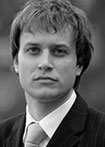Advanced Macroeconomics
Aims of the course
- Gain insight and a sense of the interconnectedness of macroeconomic categories and issues by building a macroeconomic model.- Get acquainted with the latest achievements, discussions and research in the field of macroeconomics.
- To study the intertwining of product markets, factors of production, financial markets and real estate markets.
- Connect microeconomic and macroeconomic phenomena.
- Study individual macroeconomic areas with an emphasis on analysis and empirics.
- Pay special attention to macroeconomic issues in Slovenia and the EU.
Course syllabus
1. Introduction to general equilibrium models2. Modern economic growth: theory and empirics and empirical testing
- Solow-Swan model with extensions
- Mankiw-Romer-Weil model
- Ramsey-Cass-Koopmans model
- Models of endogenous growth with externalities, human capital, expanding varieties and creative destruction
3. Real business cycles theories
- Basic theoretical framework with extensions
- Loglinearization and solutions to the model
- Calibration of the model
4. Macroeconomic models of asset pricing
- Theoretical framework
- Empirical validations of the model
5. Money in the long run
- Stylized facts about money, inflation and output
- Monetary policy regimes and inflation
- MIU model
- Money neutrality
- Inflation and output
6. Monetary policy in the long run
- Fiscal policy and inflation
- Optimal quantity of money
- Cost of inflation
7. Monetary business cycles
- Monetary business cycle facts
- Economy with monopolistic competition
- Economy with price stickiness
8. Monetary policy
- Transmission mechanism of monetary policy
- Goals of monetary policy
- Optimal monetary policy
- Model of inflation bias
- Solutions for inflation bias
- Central bank independence
- Monetary policy rules
9. Optimal policy
- Optimal policy under discretion
- Optimal policy under commitment to a simple rule
- Unconditionally optimal policy under commitment
Course director(s)

|
|
|
|
|
|
|
||

|
|
|
|
|
|
|
||






